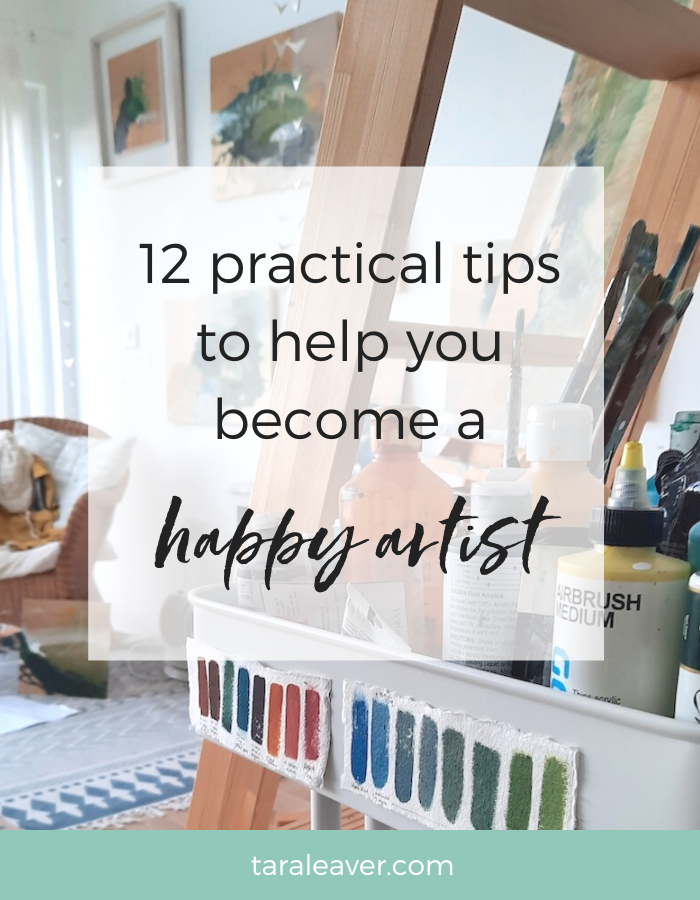
This month marks the one year anniversary of the Happy Artist Studio Membership!
To celebrate, I thought I’d share some of my favourite tips and tricks learned over the years on my own journey to becoming a happy artist, over on Instagram, and here in this post!
It’s a mix of practical approaches, materials, and mindset shifts, because all are significant aspects to the journey. I’ve tried to make them a bit different from the usual advice!
1. Root yourself in the how and the why, not the what and the who
From the post 14 Ways to Be A Happy Artist, the principles in which are the cornerstone of everything I offer {including this workbook}, and are also how I ‘be a happy artist’ myself.
Essentially, how you make your art, and why you make it, are internally generated {or they need to be if you’re going to make your most ‘you’ art}, and are therefore the truest part of your process and the place where your fulfillment lies.
If you’re too focused on the final product, or how it’s received, you’re missing all the juicy goodness that leads to being a happy artist, no matter what the what and the who are.
2. Work in multiples
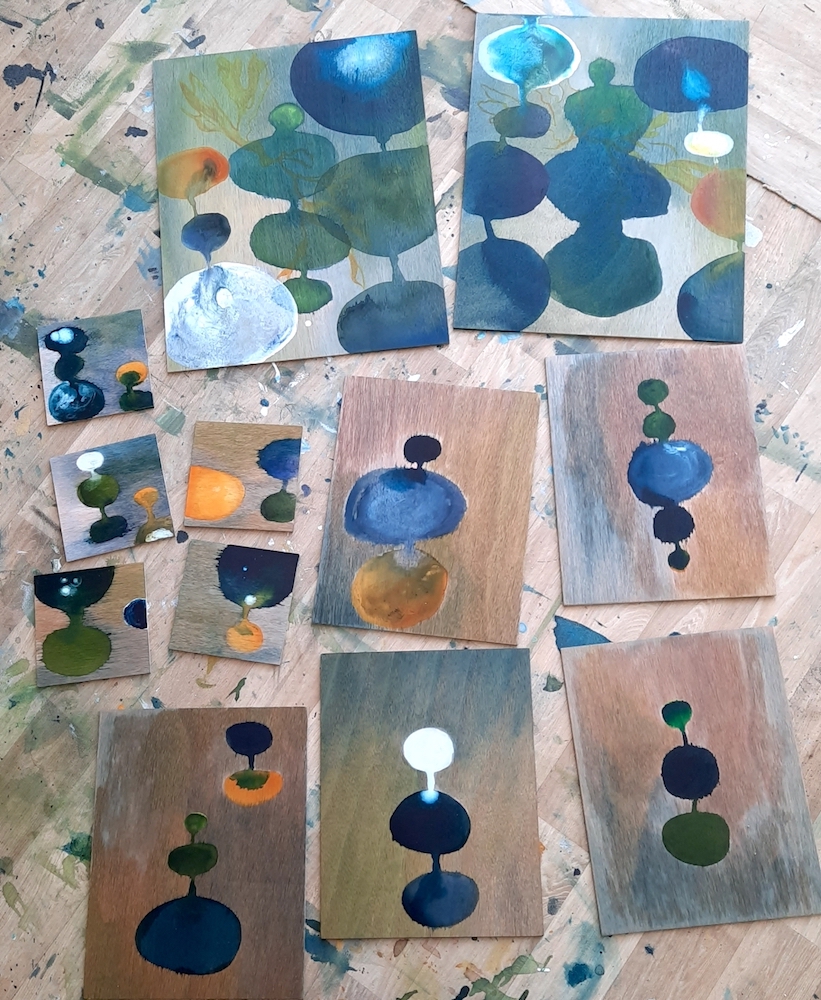
Working in multiples – the rock pool paintings in progress
Doesn’t suit every type of art {or indeed artist}, but if you’re looking for a way to stay engaged, develop an idea, and stop getting stuck with nowhere to go, this can be a game changer. It was for me.
I still make ‘solo paintings’ from time to time, but mostly I now work in collections, and love the flexibility it gives me, and the opportunity to go deep with a specific idea.
It makes my work more like chapters in a book about coastal living than a stack of books on different random topics! {Much as I love a good stack of books, I like my art to stay relatively on topic!}
See this post for more about multiples!
And if you need a bit more help, check out the Painted Postcards workshop.
3. Water soluble liquid pencil is great for no-commitment under drawing
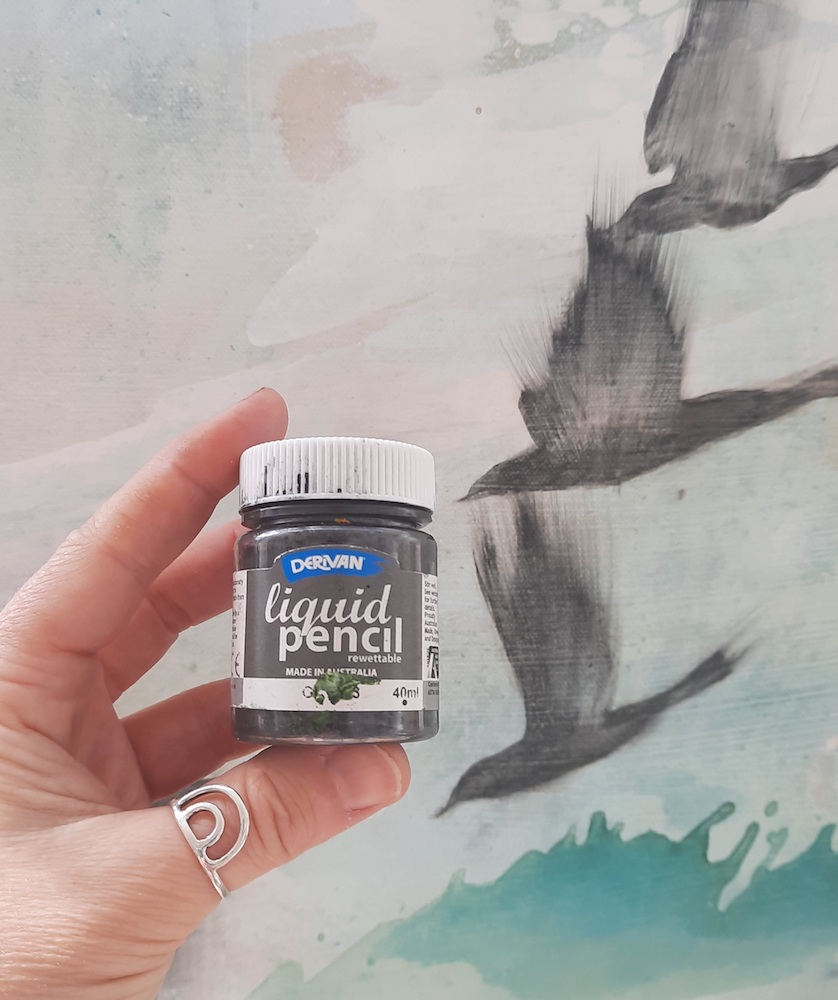
Fun because it allows for painting with a pencil! And can be used for under layers and sketchbook exploring, as well as ‘actual painting/drawing’.
I used this for my bird paintings, to help me lay out the birds without having to commit immediately. I didn’t want outlines, so I painted in the shapes with this liquid pencil {also available in permanent}, removed and redid any that needed it, and then was able to go back in with Sumi ink for the final layer and to create stronger contrast and movement.
4. Don’t let tradition and rules constrain you
People often ask me how to use a certain material, and my answer usually ends up being some version of “well I use it like this, but that’s not necessarily the way you’re ‘supposed’ to use it”, which may or may not be helpful!
I don’t mix colours on the palette, I don’t prime my wood panels, I don’t pay much attention to warm and cool colours, I don’t do thumbnail sketches, and I mix acrylics and oils without worrying about ‘fat over lean’ {or whatever it is!}.
I’m just not very interested in the traditional or ‘right’ way to use something. Sometimes it’s useful to know the qualities or behaviours of a material, or an approach to constructing a painting that typically works – the constraints can definitely be useful, especially in the early days.
But overall, I’ll always advocate for just trying what you’re thinking of and seeing what happens – sometimes it won’t work, sometimes it’ll open up a whole new world to you – and to me that’s the best way to carve your own path as an artist.
5. Try making your work on different substrates
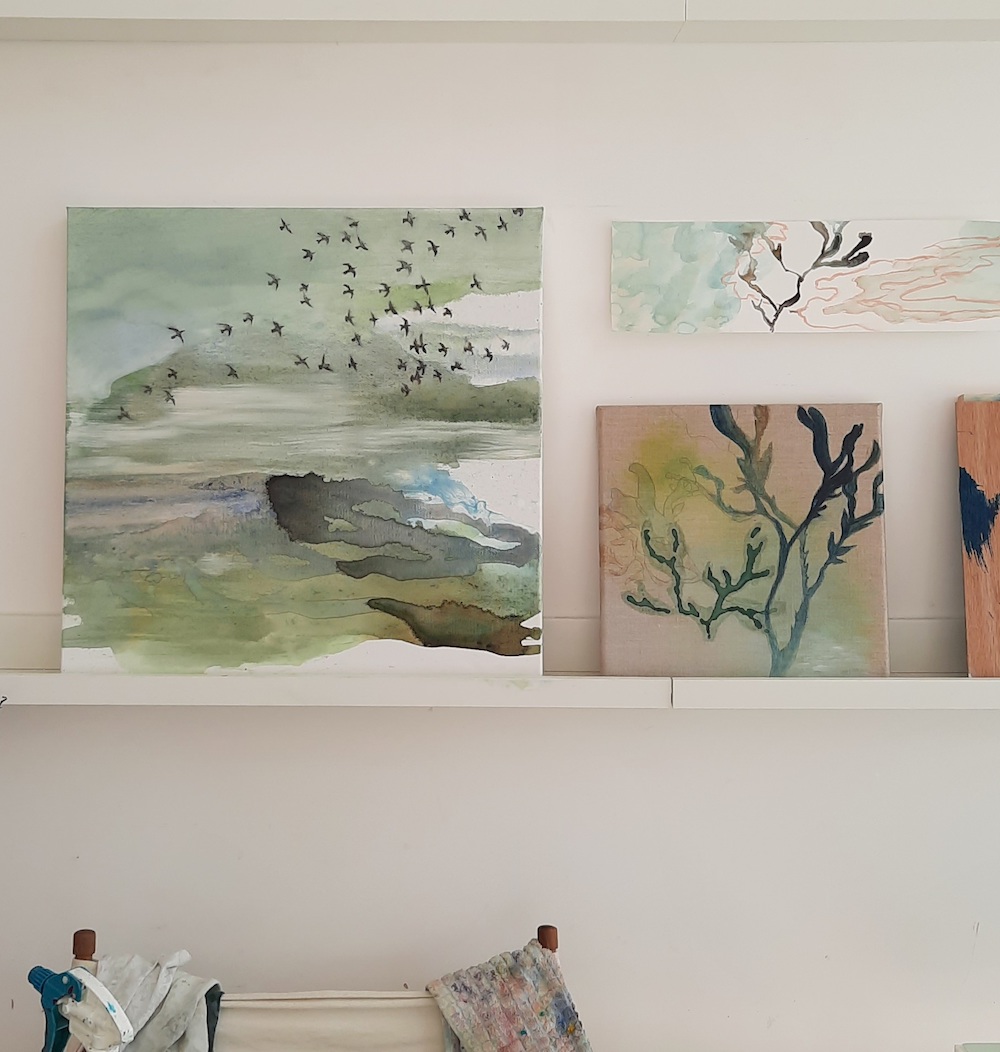
I use white primed canvas, linen canvas, wood panel, and paper.
If you tend to feel a bit all over the place in a way you don’t like, or would like to create greater consistency across your work for whatever reason, but also resist picking just one thing {because omg so stifling!}, here’s a trick I’ve found helpful – work on different substrates.
That way you get the excitement of change and diversity without sacrificing consistency, with the added bonus that you’ll develop and refine your skills as you learn more about your chosen mediums and how they behave on different surfaces.
Which typically tends to lead to a stronger artist voice. Win win!
6. Make experimentation a cornerstone of your practice
Basically, if you have an idea, and have or can create the means to try it, try it!
Experimenting doesn’t have to mean inconsistency. You can try all sorts of things within parameters you choose {and can un-choose and move around!}. And if consistency is not a thing for you, well then the world is your oyster!
I had an idea to play with contrast by incorporating both gloss and matte in a single painting {above}. So I tried it!
I learned a lot about how many coats of gloss varnish are necessary to achieve satisfactory glossiness, and exactly the degree to which gloss shows up every detail whether you like it or not. ????♀️ And I loved the result!
7. Blind contour drawing
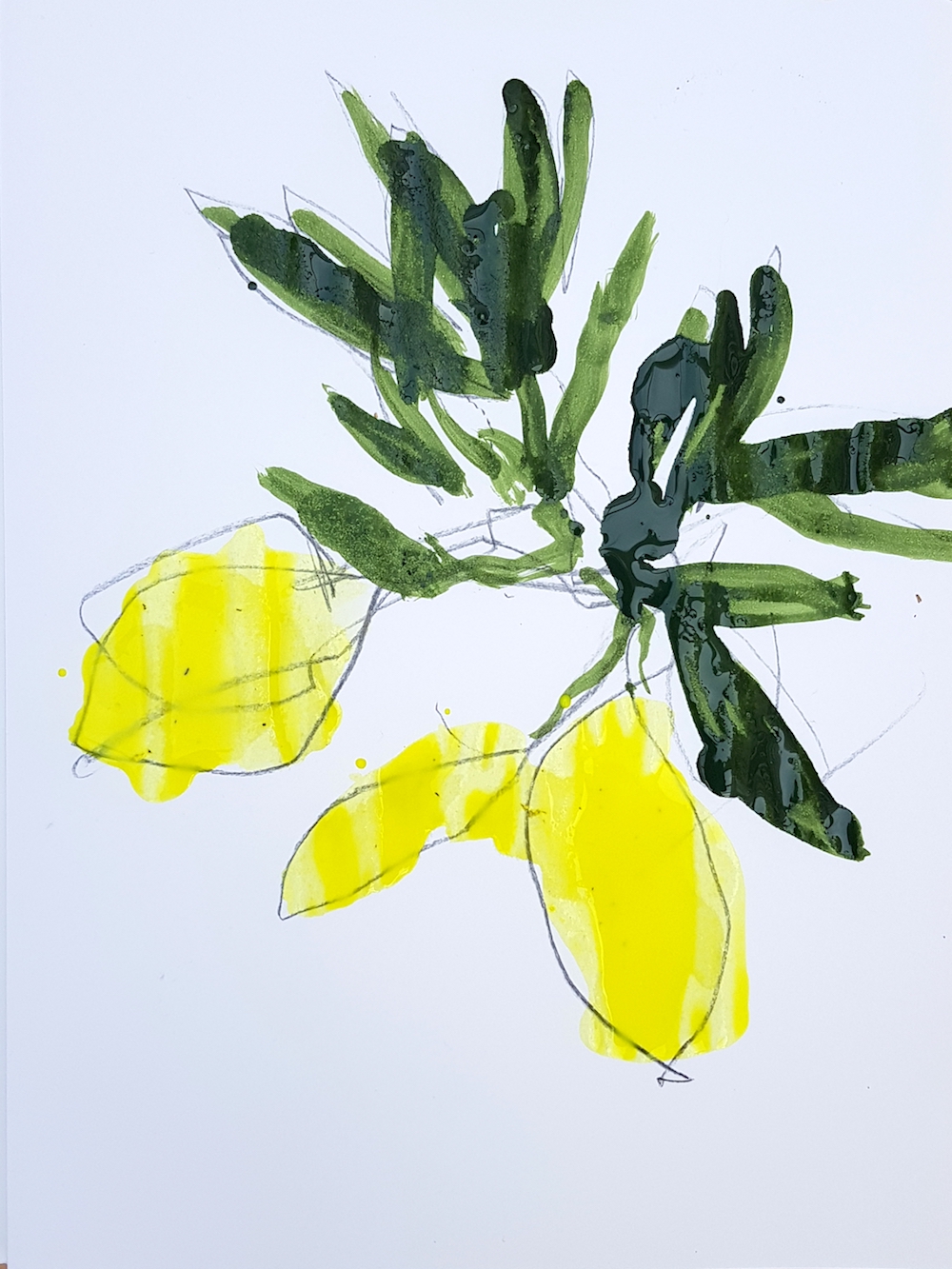
A lifelong love and something that comes up in probably all my courses, this simple tool is a gateway to SO much – greater confidence, less self-flagellation, freer mark making, greater abstractifying… if you take nothing else from this post, take this and have a go!
See more about the why and how of blind contour drawing here.
8. Use an editing app to play with ideas for stuck paintings
I photograph a painting I’m struggling with, and use the basic editor in my Samsung phone to draw over and obliterate areas. It helps me see what’s possible without making any hard and fast commitments before I’ve got a feel for what I want.
I also desaturate it to black and white as that immediately shows up issues with values and composition.
9. Create your own guidelines
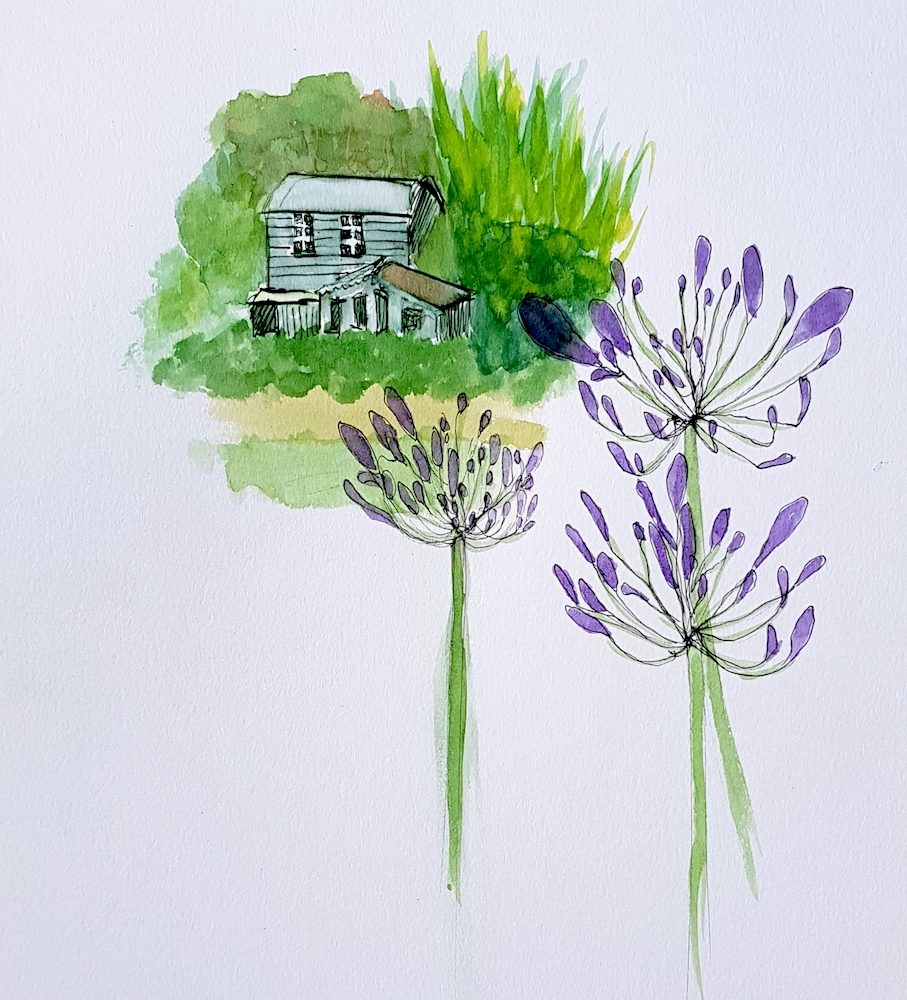
Not rules! More flexible containers, which you can adapt and discard at will.
When I was creating the Into Nature course, I did a lot of painting in a particular field of Agapanthus flowers.
I found that by singling out one element – the flowers – and enlarging them in the ‘foreground’ of the painting using blind contour drawing, while adding in more detailed drawing in the background for context {like a house and some trees}, I could create paintings without too much faffing about and trying to work out what to do.
Creating some flexible parameters – blind contour, large loose foreground, smaller more detailed background – gave me something I knew would work more or less every time. It also created several pieces that clearly went together.
10. Don’t be afraid of tangents
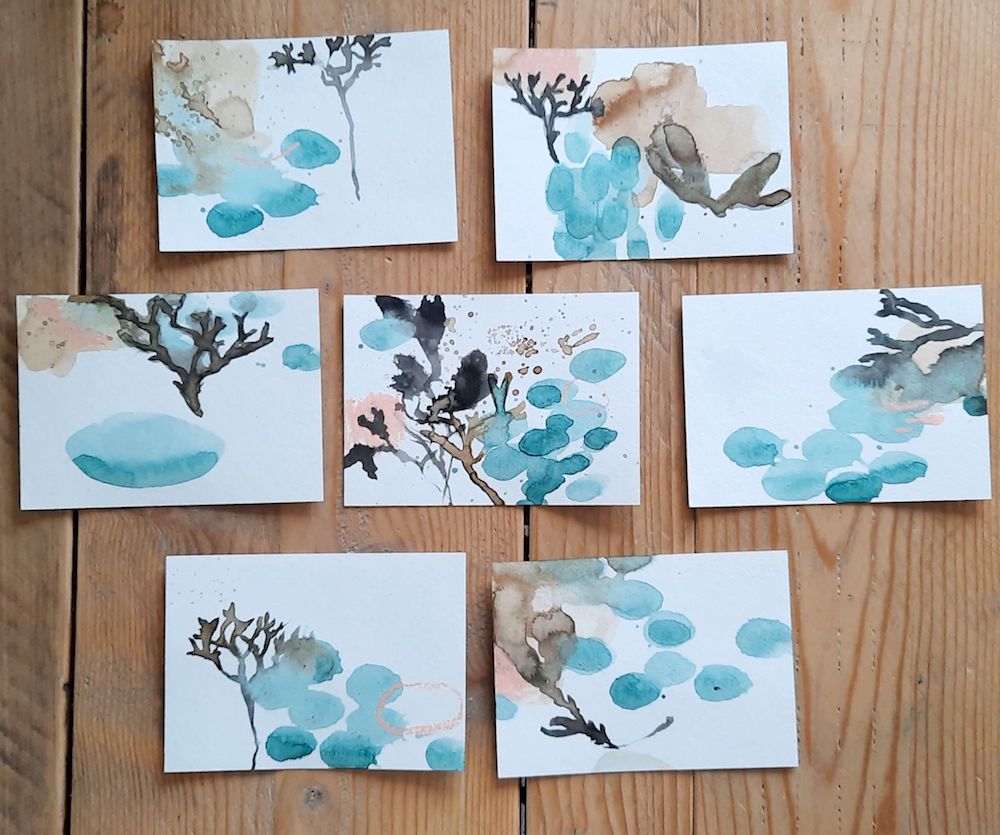
Somewhere along the way, the fact that the intrinsic nature of creativity is to be curious about all sorts of different things turned into a stick that many artists beat themselves with.
Which is a shame, and not a little ironic, because without our innate curiosity we wouldn’t be so creative!
Instead of feeling bad about being ‘scattered’ or ‘unable to focus on one thing’, I suggest embracing your apparently unconnected ideas and exploring them as much as you can.
My tangents have been varied and wide ranging over the years, but they have given me things like my bird strings, my Postcards from the Sea {small works on paper, some of which are shown above – they taught me a lot and have been popular, which was a nice bonus}, and that time I tried Yupo paper {which turned out not to be for me, but at least it’s no longer taking up headspace nagging at me to try it!}.
Some tangents are just things we need to get out of our systems, some have nuggets of gold that we can carry forward into our current practice, and some are simply fun!
11. Have a Pondering Chair

The Pondering Chair
Ok, this is a bit tongue in cheek, but this isn’t really about having a literal chair {although if you can I highly recommend it!}.
What I really mean is a bit of physical distance from which to consider the work, and ideally somewhere comfy to sit while you do that.
My Pondering Chair is a second hand wicker number I got from Gumtree, with some old painty cushions on it, and it’s an invaluable part of my process.
I think a lot of us don’t realise, especially when we’re newbies, how much of the painting process {or indeed the creative process in general} doesn’t look like, or even involve, the physical act of painting.
For me, a huge part of the process is sitting in my Pondering Chair, pondering. Looking and looking and looking some more.
Thinking, feeling into, considering, asking questions. I might get up, make a mark or turn the painting upside down, and sit back down again. Sometimes that’s all I do – it’d be a very boring hyperlapse to watch!
But like with anything that goes deep in life, some quiet percolating time is crucial. So you can see the wood for the trees and the muse has room to to breathe.
12. Almost everything takes longer than you think
I made a collection of rock pool paintings last year. They were much loved online… and almost none of them sold.
It took me a bit to work through the disappointment, but turned out to be a gift in disguise.
{I’d inadvertently got too invested in the what and the who, in fact! I’ve developed a much healthier perspective and understanding now.}
In fact, two now live in the US, three sold in a flurry recently, and three are going to an exhibition this summer.
It all just happened on a longer time frame than I had in mind.
And that’s the thing. Almost everything does, in my experience, and especially the things we want the most!
If you can learn from my mistake and tack on a waaaaay longer grace period for anything you’re creating or trying to bring into the world, you’ll be fine.
And then typically it’ll happen in a much more miraculous and wonderful way than you ever anticipated.
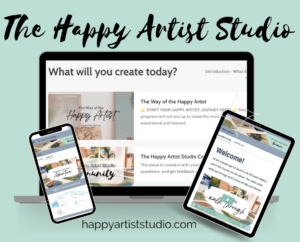 I hope one or two of these are helpful to you!
I hope one or two of these are helpful to you!
If you’re interested in becoming the happy, thriving artist you know you can be, but aren’t quite sure how to get there, come and check out the Happy Artist Studio Membership.
Through a combination of monthly topics, a wealth of self study mixed media courses, and a friendly and supportive private community {not on Facebook!}, our focus is on guiding you back to your true artist voice and helping you find YOUR way to thrive as an artist. Click here to learn more and join us!







Thanks for the tips! They are so helpful. And btw I LOVE your rock pool paintings! I don’t buy much art because my house is crammed full of my own, but I am considering buying one of those! A mix of 60s mod and ocean!
So glad it was helpful Sandy! And thank you for the kind words about my work – never heard it described that way before! Always fun to hear how people experience it. 🙂 Do get in touch if you’d like to see what’s available or have any questions!
Love this Tara, and I’m sure it is so helpful to people. Art as therapy can be so powerful! Good luck and good health x
Thank you Maeve!
Love your ideas. Was wondering about the unique way you frame your paintings. Could you tell us about it. Pretty and unique paintings.
Thank you! I have a lovely local framer who custom makes the frames for me. They’re basically floating frames but with a bit of extra wood that fits snugly round the paintings themselves. 🙂